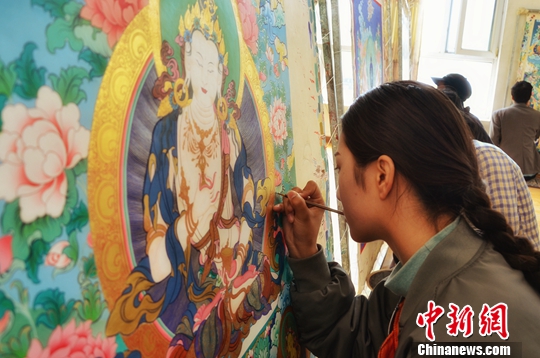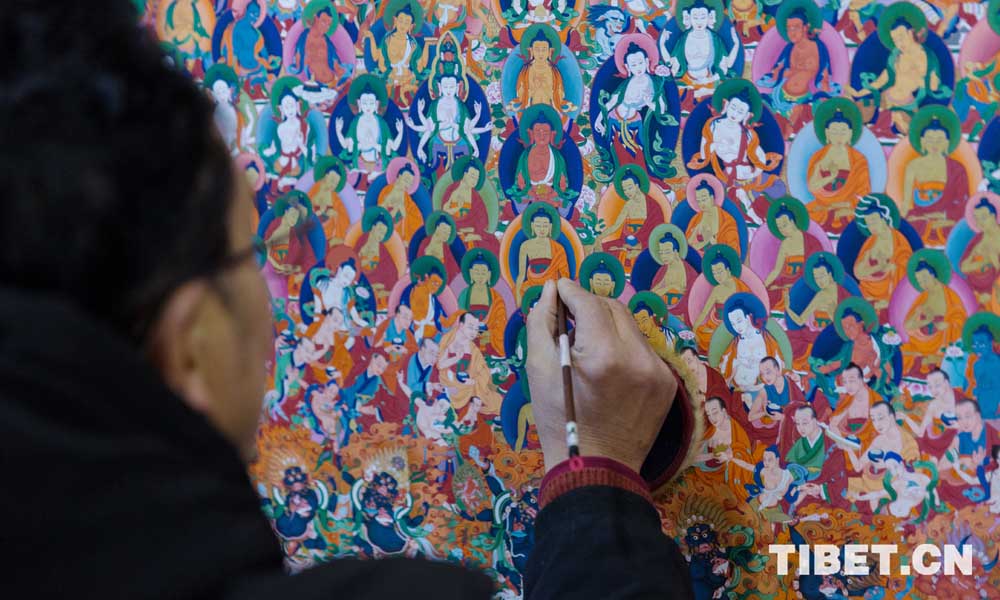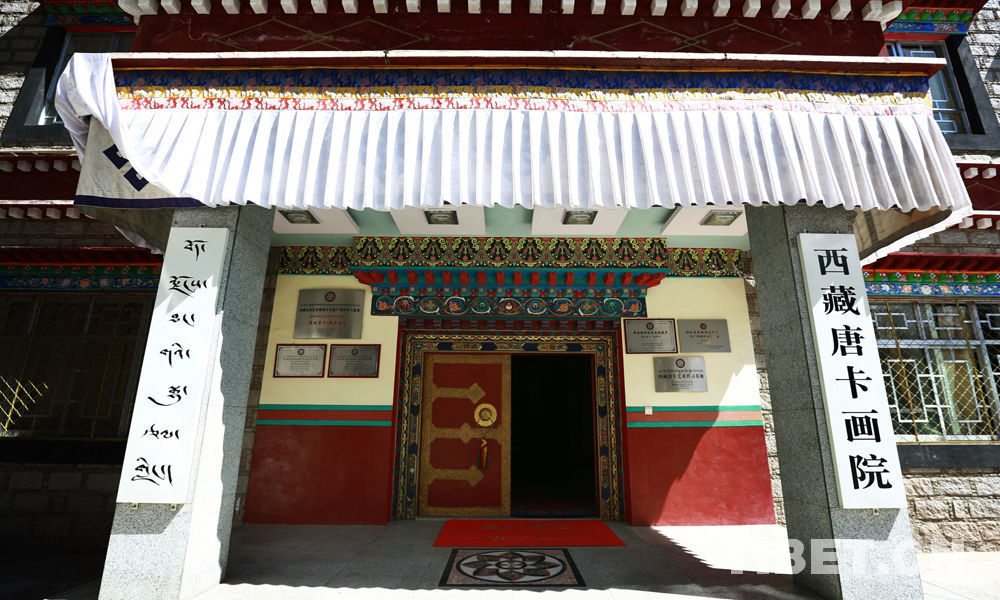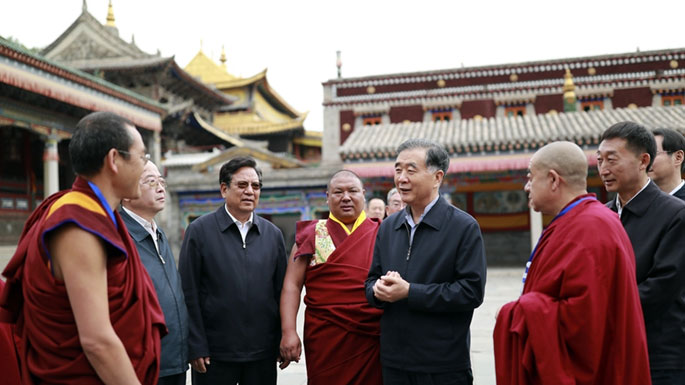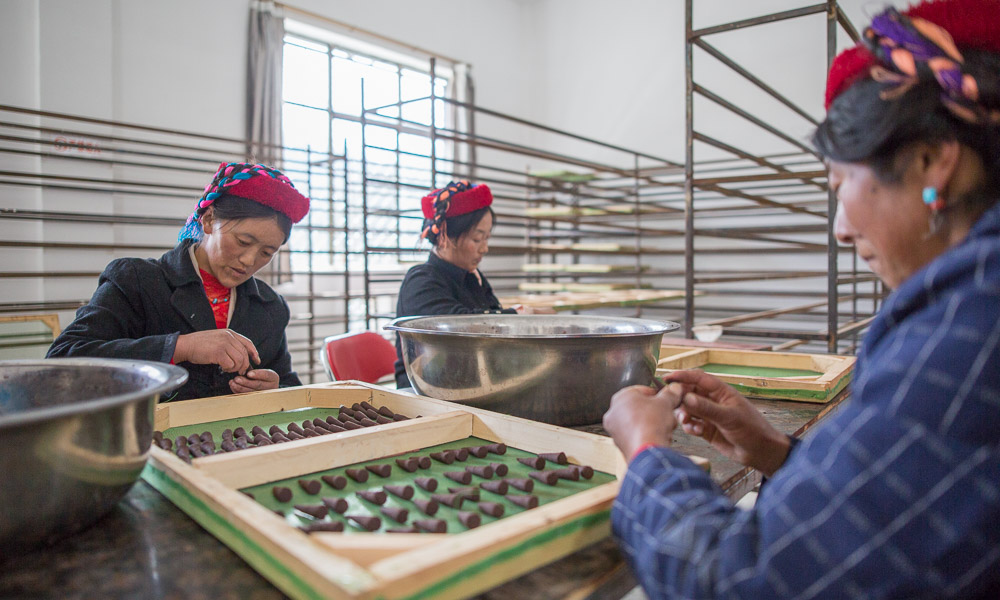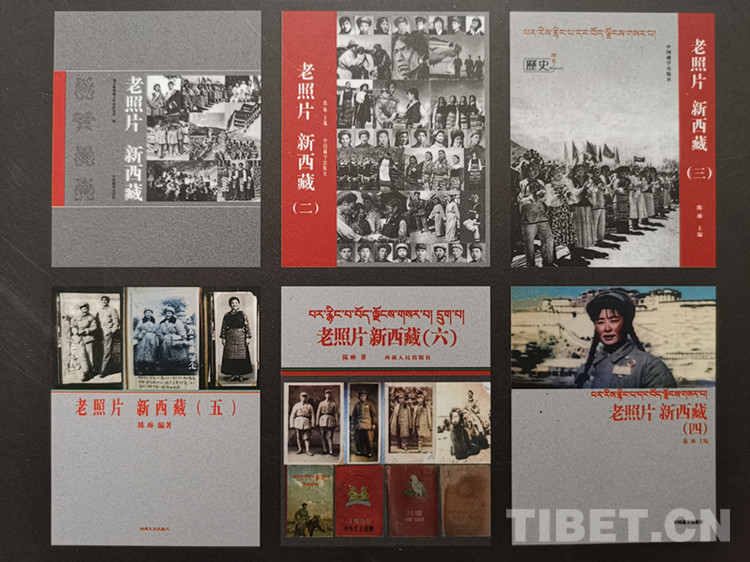New livelihoods offer new lives to nomads
Thangka painter Tudam Ouzhub is a portrait of poverty-alleviation efforts on the Qinghai-Tibet Plateau.
The 21-year-old said he had few prospects before he started learning how to create traditional Tibetan Buddhist scrolls at a vocationaltraining center in Qinghai province's Qumarleb county two years ago.
"I had no real work before I came here," he said.
"I dug caterpillar fungus (a traditional medicine) and did odd jobs."
He'd often go long periods without earning anything.
"I got about 1,000 yuan around every three months," he said.
"I don't have any skills. If I learn this, I can earn money. After I graduate from here, I'll go elsewhere to truly master painting thangka."
He pointed out he has only studied one of the genre's two major schools.
Many plateau residents have faced similar livelihood struggles. There are few resources and even fewer industries on the planet's "third pole".
But there is a need for basics. And the "roof of the world" has sired a unique culture.
Most people herd yaks, horses and sheep. It's backbreaking work for little money. It's even tougher for residents who don't own livestock.
Many older nomads are illiterate and don't speak standard Tibetan, let alone Chinese. So, they can't easily become migrant workers.
This has prompted governments in such places as Qumarleb in Qinghai's Yushu prefecture to invest in vocational training, migrant housing and cooperatives.
Qumarleb's vocational training center isn't far from the county's new "poverty alleviation street", as locals call it.
There, the governments of villages throughout the county run businesses such as hotels, restaurants and shops on the edge of downtown. Profits are split annually among villagers.
Some of the street's employees graduated from the vocational center.
The center where Tudam Ouzhub paints is a recently opened compound of almost a dozen buildings near the migrant relocation district. It trains over 400 people in various trades.
They learn to work as cooks, barbers, mechanics, machine operators, electricians and home decorators.
Many are taught local livelihoods, such as hosting traditional Tibetan weddings, performing folk dances and tailoring Tibetan robes. The center's robe creators host a showroom.
The most luxurious sheepskin robes sell for over 100,000 yuan ($14,530), while the cheapest cloth varieties start at around 200 yuan. They take about six days to make, and it takes about a year to learn how to make them.
Sales from the tailoring cooperative are divided among the apprentices, who-like all trainees at the center-receive free instruction, food and accommodation.
Most graduates have moved to the prefecture seat, where they earn about 3,000 yuan a month, head teacher Shegyab said.
He previously sold robes in his own store on Qumarleb's shopping street. So the government invited him to work at the training school.
"I earned more before working for myself," the 50-year-old said.
"But here I can teach my skills to others."
Samdrub Quepai, who teaches thangka painting and earlier sold scrolls in his own shop, also said he's happy to accept a lower income to help others increase theirs.
"I'm delighted to pass down this traditional art here," the 28-yearold said.
Most graduates have gone into business for themselves and earn between 4,000 and 6,000 yuan a month, he said.
In 2017, thangka student Jamphal Topden returned from India, where he'd spent 16 years, starting at age 8, because he'd heard of the center's training.
"It's so meaningful," he said.
"It's not just art. It's not just painting. It's so much more."
Tibet Stories
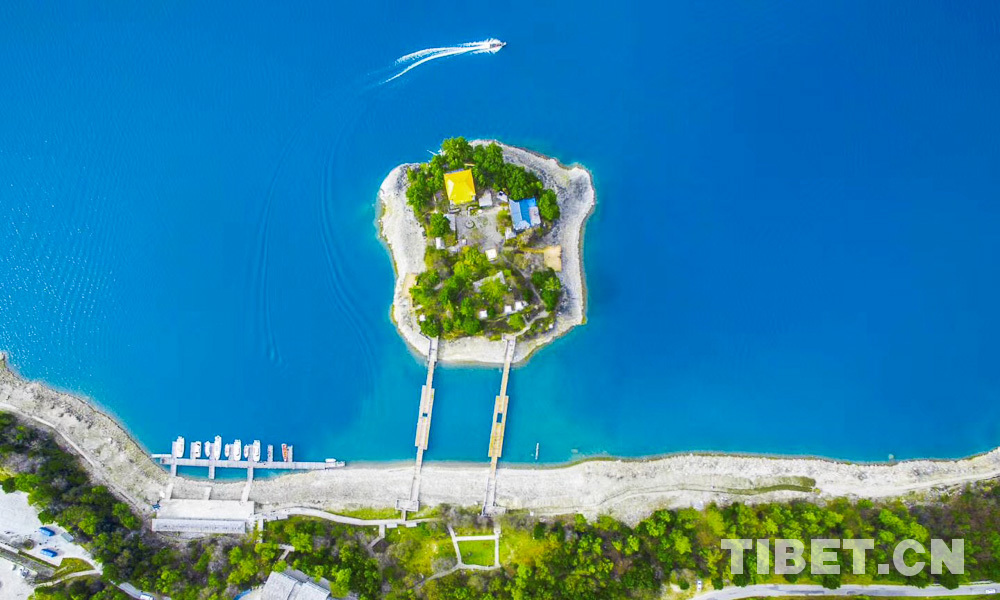
Emancipated serf Ngawang: "wish my happy life can go on"
Today, Ngawang's greatest hobby is to watch the workers build the house as he wants brick by...
